The cave towns of Crimea are a unique and fascinating phenomenon of this region of the world. Located in the southwest corner of Crimea, they are a series of naturally formed limestone caves which were expanded and strengthened for use as dwellings and fortresses during the Middle Ages by various tribal groups. In many cases little is known about the inhabitants of these cave towns other than the approximate years of occupation. There are many separate locations you can visit scattered throughout the area, among them Chufut-Kale, Tepe-Kermen, Kyz-Kule, and Eski-Kermen. We chose to visit the caves of Eski-Kermen.
(Black Sea coastline heading up into the Crimean Mountains)
You can find day-trip excursion tickets at any of several locations in Yalta for about twenty dollars U.S. per person as we did. We boarded our mini-bus with about fifteen other travelers around 9 a.m. and settled in for the ride heading west along the Black Sea coast from Yalta. It’s always a beautiful drive, particularly so when the sun is shining as it did the day we went. To our left the sun sparkled on the rippling blue waters of the Black Sea, to our right reared the rugged cliffs and rock faces of the Crimean Mountains, while all around us were heavily forested hillsides of deep green.
(Church in the hills)
Eventually our road turned uphill and snaked into the mountains. Our first stop was at a small church built on a rock outcropping and clinging to the hillside with a dramatic view of the coastline below. After taking full advantage of our ten minute rest stop and photo opportunity, we re-boarded and resumed our upward journey into the heart of cave country.
The Crimean Mountains are not all that high in comparison to other ranges – the tallest of them top out around the 1,200 meter mark, or just under 4,000 feet – but what they lack in altitude they more than make up for in beauty and drama. The area we drove through was heavily forested and sparsely settled, with agriculture the primary means of making a living for the folks who do live in this bucolic setting of rolling hills and fields and forests.
(Crimean mountain lake)
(Yes, the water really is that green)
We drove for about a half hour and made another brief stop at a lovely small lake, snapped a few photos and admired the view, then resumed the final stage of the drive to Eski-Kermen.
(Climbing to the caves)
(Valley floor and mesa)
Eski-Kermen is one of the earliest inhabited of the cave towns of Crimea. Today, Eski-Kermen sits one side of a double mesa separated by a 150 meter wide valley, about six kilometers from the small village of Krasnyy Mak, which is Russian for “red poppy.” But Eski-Kermen began life as a Byzantine boundary fortress in the sixth century, manned by the Goths. In fact the name Eski-Kermen was given it by the Tatars many centuries later, and means simply “the old fortress.” But it was the Goths who first built extensive fortifications in the area, including a town gate carved right into the bedrock, a siege wall along the eastern edge of the plateau, tunnels and hidden staircases, grain storage pits, a ten meter long underground gallery where water was gathered from a natural spring, and cells for guards chiseled into the rock along the edge above the precipices to patrol the approaches to the fortress.
During this time Eski-Kermen held a dominant position in the economic life of nearby settlements, serving as a trade hub. At its peak, more than 350 caves were used for habitation, housing for livestock, craft work shops, grape presses and storage. Some of them had wooden or tiled floors and balconies and wooden piping for water.
A couple of centuries after the Goths, Eski-Kermen was then held by the Khazars from the eighth to the thirteenth century. For reasons unknown they demolished much of the defensive system and from the tenth century onward Eski-Kermen became a small town with living quarters and churches built right into the rock.
After the Mongols ravaged Crimea in the 14th century, the cave town system collapsed and most of them were never inhabited again.
(Wildflowers)
(Wildflowers)
The great thing about visiting here is you can easily see it all and walk right through the whole complex. It takes a bit of effort, as the paths are steep ascending from the valley floor and a bit slippery in spots with steps cut right into the stone – I wouldn’t want to chance some of them when wet – but with a little sweat and strain you are soon rewarded with sweeping views of the surrounding plateaus, mesas, canyons and valleys. You can even see the town of Bakchisaray about eight miles in the distance.
(Atop the caves)
One of the things I truly love about traveling and sightseeing in Ukraine is the “do this at your own risk” attitude which prevails pretty much everywhere. If these cave towns were in the U.S., most if not all of it would be cordoned off, hovered over by security people, and basically become a no fun zone.
(In the caves)
“Don’t step here, don’t go in there, look but don’t touch, watch out, be careful.”
In Ukraine, the assumption is you are an adult, you can take care of yourself and decide what you want to do, where you want to step, and if you take a tumble (or worse) because of your own inattention or stupidity, tough. And if you’re not an adult, you should be with a parent or other responsible adult who will watch out for you. My wife assures me this is due to one huge difference between Ukrainian and American culture, and that is of course the American lawsuit mentality.
(Top of the world. Well, it feels like it, anyway)
In the U.S. every aspect of public life is dominated by the fear of lawsuits to such an extent I don’t think we even realize it anymore until you travel somewhere like Ukraine. Spill a cup of boiling hot coffee on yourself in some U.S. restaurant or café and you can sue someone – anyone – and become an instant millionaire. In Ukraine, if you tried bringing something like that to court, the judge would throw you out on your ear. In fact it would probably never come to court in the first place because with a mentality of personal responsibility no one would think of sueing someone else for their own blunder and trying to profit from it, even in a situation where there is some danger involved.
(Quick, take the shot before my back gives out!)
And believe me, there is some danger involved in walking around the caves of Eski-Kermen. I’m not talking about base-jumping, freehand rock climbing levels of danger, but take a wrong step without paying attention and you could have a long fall with an abrupt stop at the end. Even when you’re not close to any precipices, you could step into one of the grain storage pits and break a leg, or even your neck. But after a word of caution from our tour guide at the beginning of our trek, it was every man or woman for themselves and if you want to wander off the trail or investigate some dark corner of a cave on your own, no one is going to stop you.
I love it.
(Picture window, caveman style)
Coming soon: Eski-Kermen(part 2)
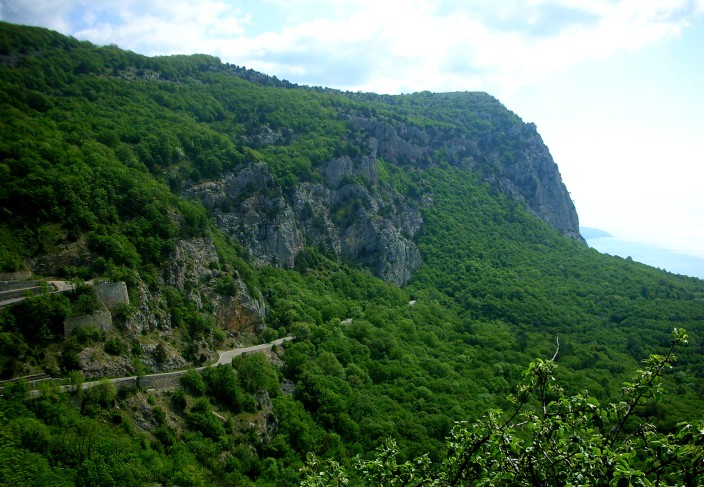
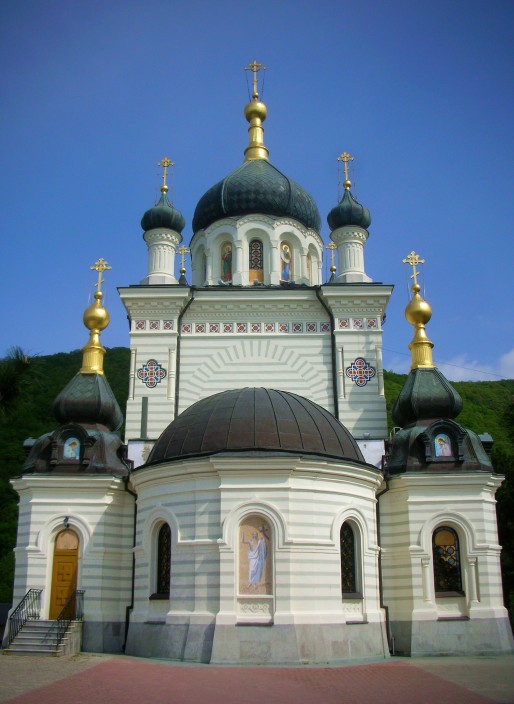
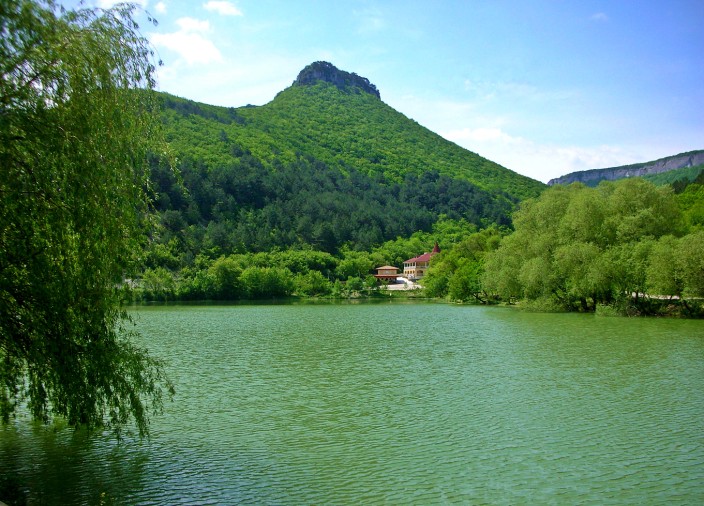
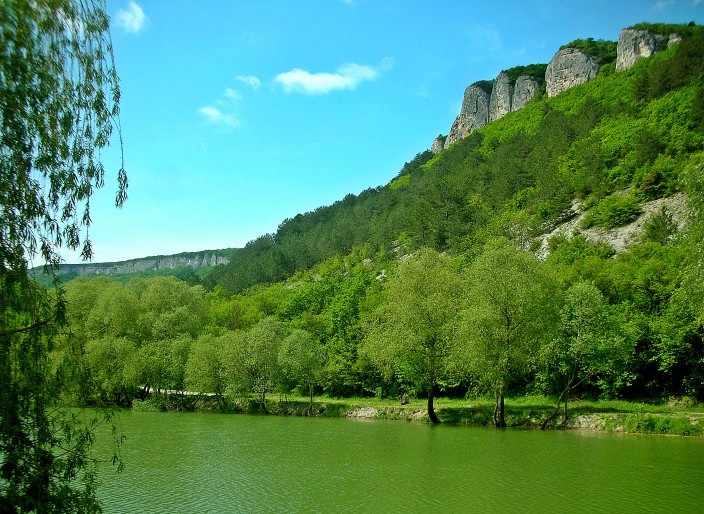
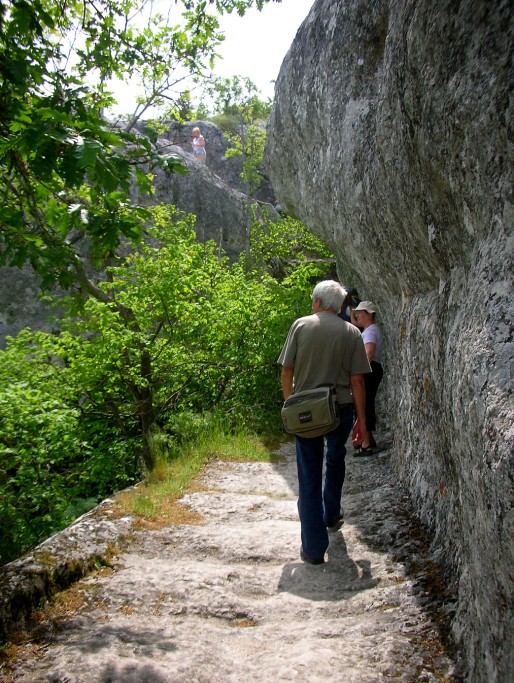
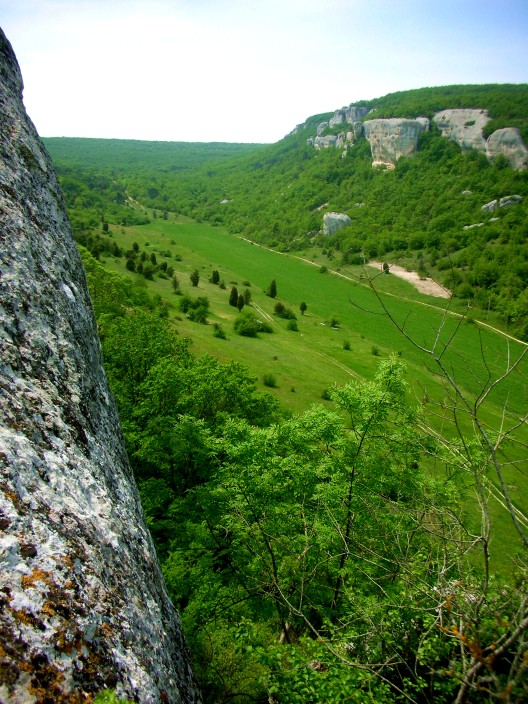

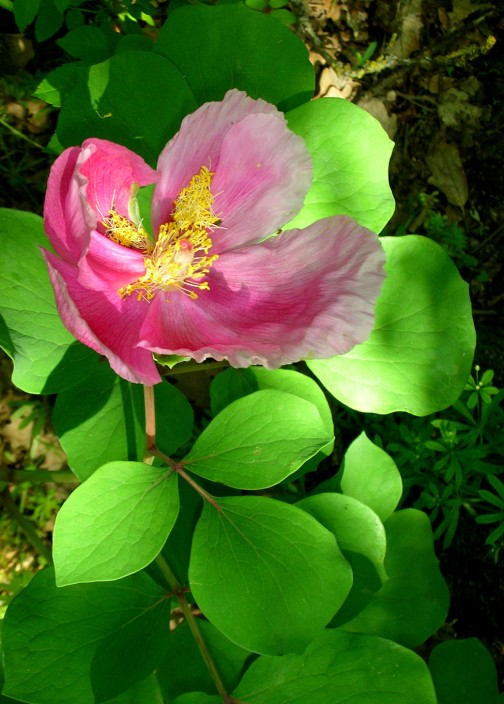
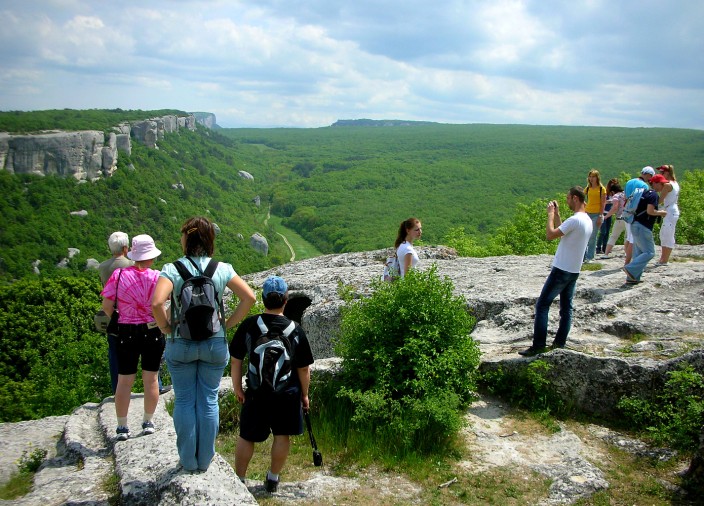
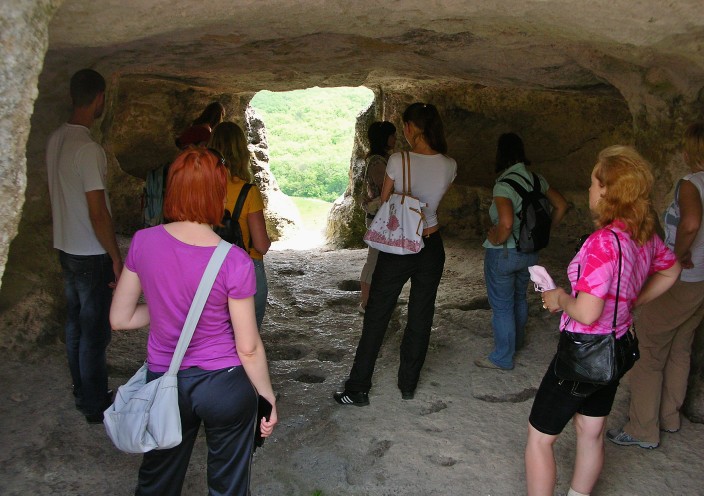
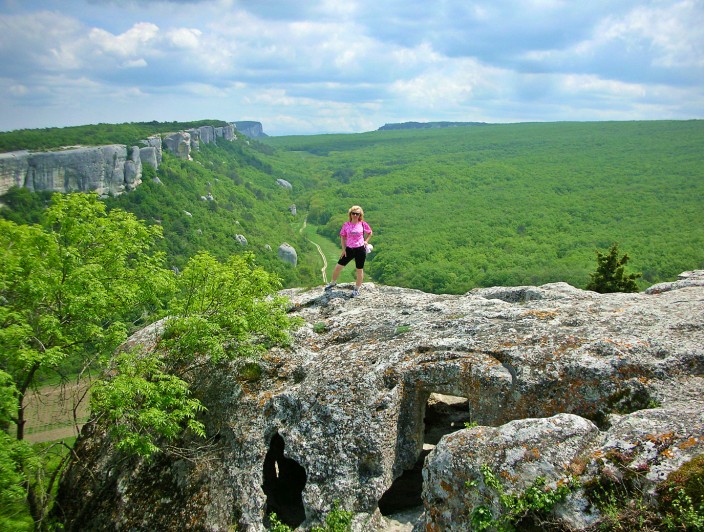
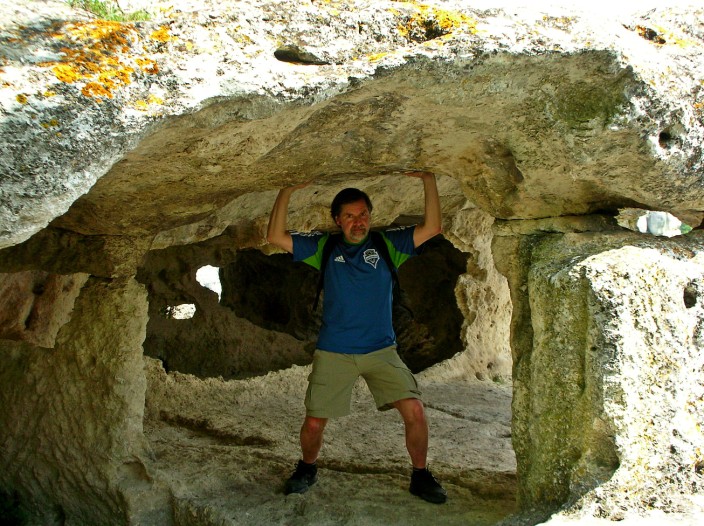
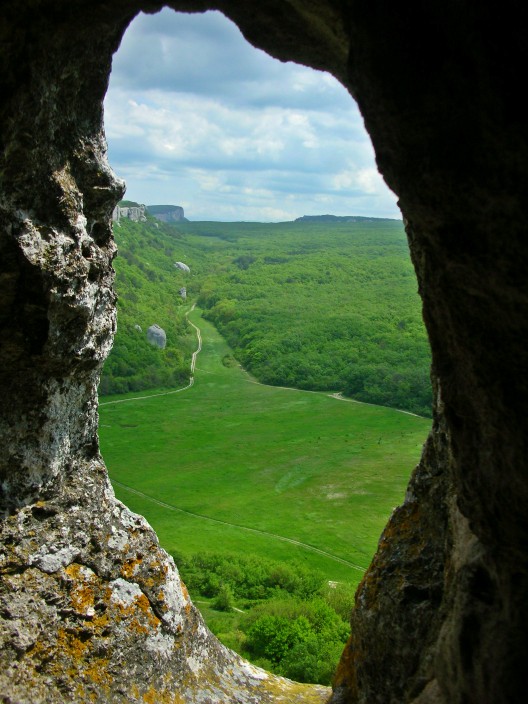
Great site, photos and writing!
You have just added another country to my long list of musts.
I totally agree with you on the personal responsibility issue. That is why Sterling Castle in Scotland is a favorite.